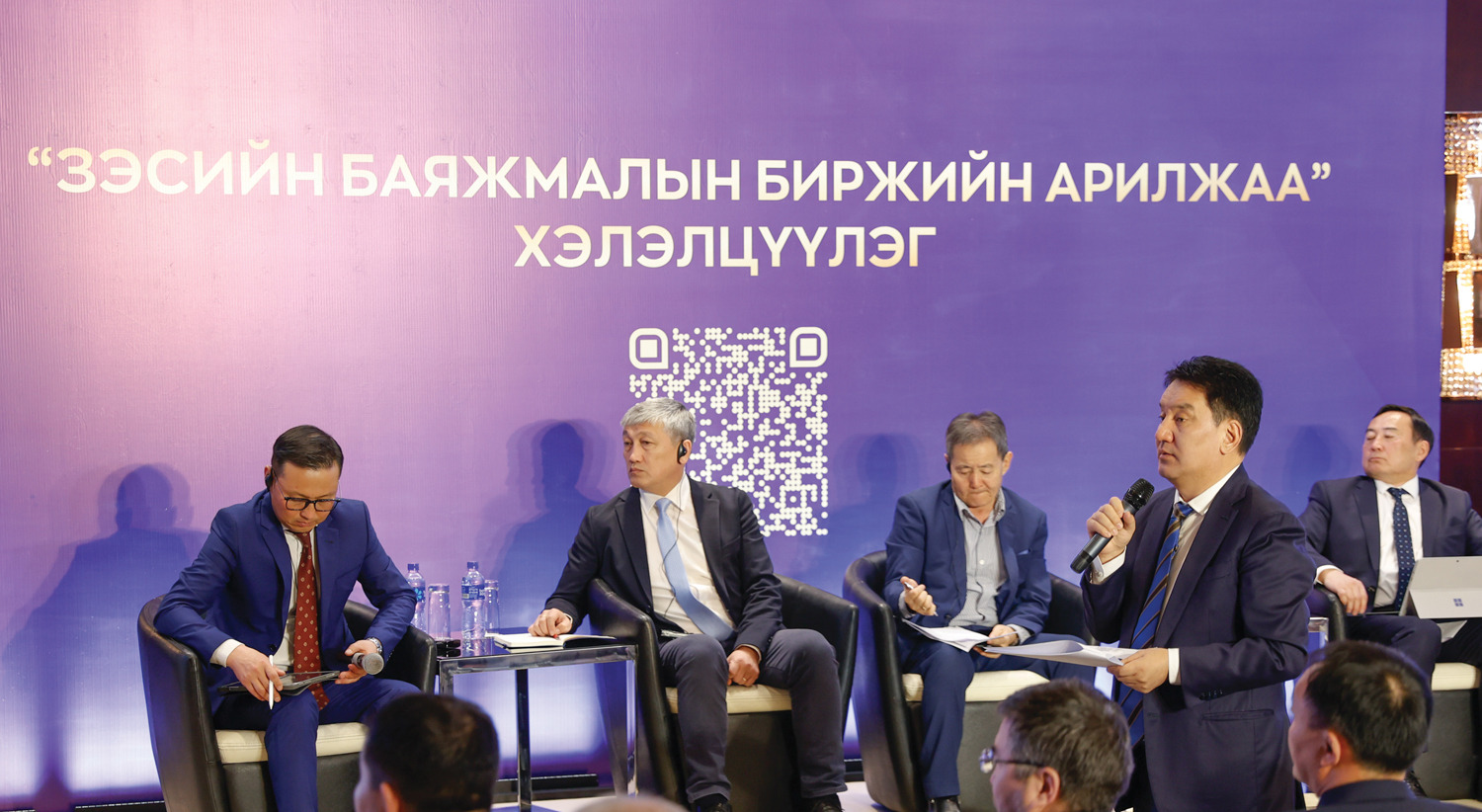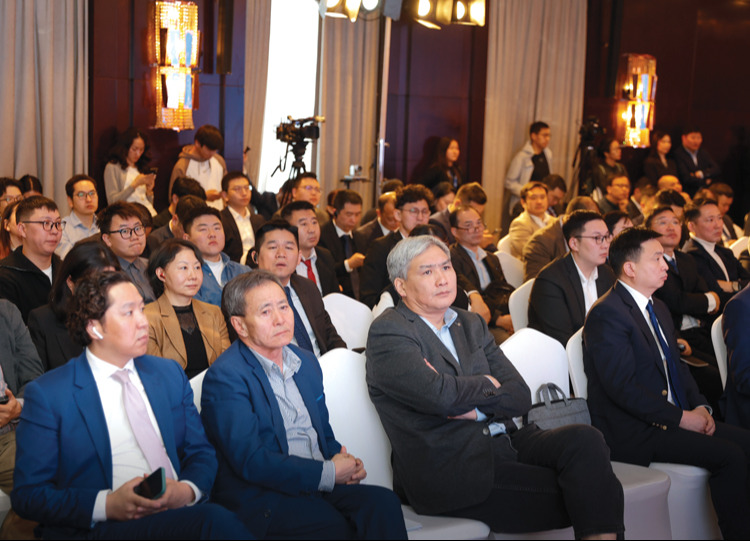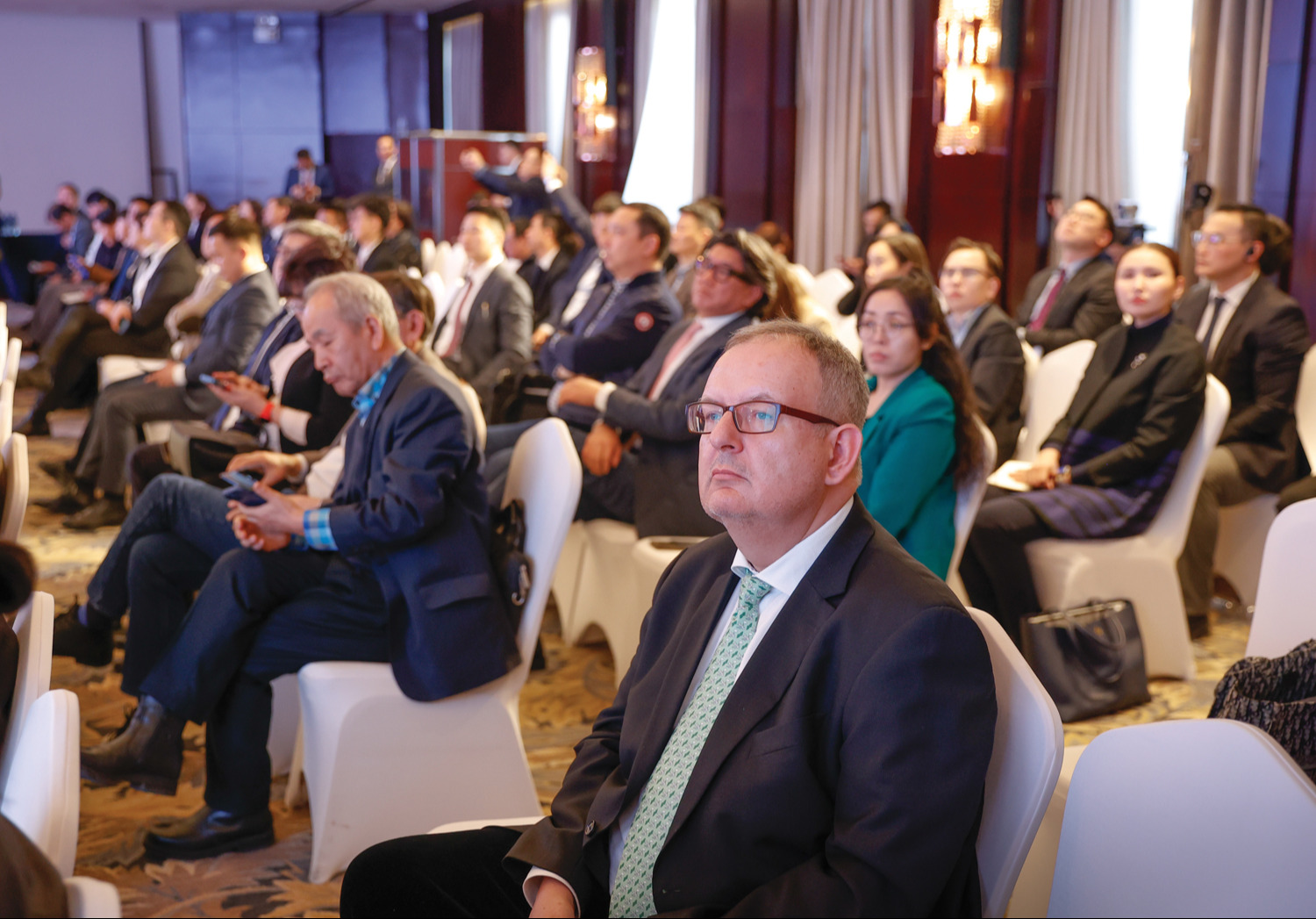
The Mongolian Mining Journal /Apr.2024/
А. Khaliun
The production and export of Mongolia’s mining products contributes 27% of Mongolia’s GDP, and constitutes 71% of the industrial sector, 92% of export income, 77% of foreign direct investment, and 32% of the state budget income. While relying heavily on one sector isn’t ideal, these statistics highlight the mining sector’s crucial position as the primary driver of Mongolia’s economy now and in the foreseeable future.
Efforts have been made to diversify the economy by supporting the development of other sectors such as tourism, agriculture, and animal husbandry. However, there are no estimates of how long it will take for these sectors to fully develop and become bigger pillars of the economy.
The record of the government meeting of December 13, 2023, revealed that the Minister of Mining and Heavy Industry was assigned the task of “investigating the phased implementation of copper concentrate trading through the mining products exchange and initiating trial trading. In response, the ministry formulated a proposal to include copper and molybdenum concentrates and products in the list of minerals eligible for trading on the mining products exchange”. This proposal was presented and approved during the Cabinet meeting on February 28, 2024.
The resolution stated that the royalties imposed on copper and molybdenum concentrate traded on the exchange will be calculated based on the trading price of the exchange. This has the advantage of reducing the tax burden on enterprises.
On March 18, the Ministry of Mining and Heavy Industry convened a discussion on “Copper Concentrate Trading,” bringing together industry producers, experts, and foreign partners. This was part of the preparations for initiating the exchange trading of copper concentrate.
Representatives from both seller and buyer parties participated in person and online. Over 200 delegates from national and international enterprises spanning China, the Republic of Korea, Vietnam, Singapore, Hong Kong, Russia, Switzerland, the USA, the Czech Republic, Canada, India, Australia, the UK, and Turkey registered for the event.
Mongolia’s proven copper reserves reach 56.5 million tons
Mongolia boasts proven copper reserves totaling 56.5 million tons. By the end of 2023, the country had produced and exported approximately 1.5 million tons of copper concentrate. The Minister of Mining and Heavy Industry, J. Ganbaatar, highlighted that once the Oyu Tolgoi underground mine and the Tsagaansuvarga projects reach full capacity, they are anticipated to collectively produce around 2 million tons of copper by 2025.
Amidst the backdrop of copper prices soaring to $9000 per ton on the world market, the highest level seen in the past 11 months, Mongolia’s decision to initiate copper trading on the stock exchange appears well-timed. Copper, serving as the primary engine of the economy, experienced a steady rise in price throughout the third week of March 2024. The surge in demand for base metals, leading to price increases, was largely attributed to anticipated growth in global manufacturing.
According to research by Wood Mackenzie, the demand for copper is projected to surpass supply starting from 2026. By 2031, the gap between supply and demand could potentially reach 7 million tons. This trend is evident in the current state of the world market, where the price of copper is rising in tandem with increasing demand.
Initially, the government intends to sell 10% of copper concentrate produced in Mongolia. The largest copper producers in our country are Erdenet Mining Corporation and Oyu Tolgoi. Erdenet Corporation produces an average of 620,000 tons of copper per year. According to their business plan, 5-10% of production at the initial stage will be traded on the exchange.
Nevertheless, it is important to acknowledge that Oyu Tolgoi has already devised its business plan for 2024 and finalized agreements with international partners. Starting in 2025, as underground mine production ramps up, there will be an opportunity to allocate a certain percentage of copper for exchange trading.
During the PDAC international mining industry conference held in Toronto, Canada, in early March, Minister J. Ganbaatar affirmed that discussions with Oyu Tolgoi investors regarding exchange trading were fruitful, leading to mutual understanding. Going forward, there are plans to incrementally increase the amount of copper concentrate traded on the exchange. The goal is to sell 30% of copper concentrate through the exchange in 2025, with the percentage rising to 40% in 2026.
It was noted at the meeting that the enforcement of the Law on Mining Products Exchange—designed to strengthen foreign currency reserves, optimize gains from natural resource exploitation, combat corruption, and promote transparency in mineral trading-was yielding positive results.

Ya. Purvee :The Erdenet Mining Corporation plans to initially sell 5-10% of its copper production through the exchange
Stakeholders were informed that copper trading on the exchange is slated to commence in April 2024, with the exact start date to be announced 14 days prior to starting.
Ya. Purvee, the Head of the Foreign Relations and Export Department at Erdenet Corporation, presented details regarding the conditions for copper concentrate production and supply, as well as preparations for exchange trading.
Purvee stated that the Erdenet Plant processes 38 million tons of ore annually and exports 628,000 tons of copper concentrate by wet weight. The consistent content and quality of the copper concentrates meet established standards, providing a competitive advantage for partnering smelters.
Our concentrate contains 22-22.5% copper, 25-30% iron, and 65-85% silver. On average, the humidity is 9%, and toxic chemical elements such as arsenic are present at very low levels, typically less than 0.3%.
The Chinese government has established limits on five harmful chemical elements, including fluorine, lead, cadmium, and arsenic. They have set a standard requirement for arsenic content to be less than 0.5 %, with which we fully comply.
We engage with our commercial partners through a three-year sales contract adhering to international standards. Prices for metals are determined using the monthly average from the London Metal Exchange, with a unified price structure established for all customers.
All our copper concentrate goes to the Chinese market. Five days before shipment, 95% of the total amount is deposited into the Erdenet Mining Corporation’s account, with the final payment received within five working days after delivery.
The Erdenet Corporation operates an accredited quality laboratory and collaborates with three international companies listed on the London Stock Exchange. These companies verify and approve the weight and metal content of each batch.
In addition, the buyer takes product samples from each batch, analyzes them in its own laboratory, identifies the levels of the aforementioned five harmful elements before the train reaches the border, and ensures that there are no border crossing restrictions.
J. Tsogtbayar: We are focused on enhancing the trading of mining products through the exchange
J. Tsogtbayar, Executive Director of the Mongolian Stock Exchange JSC, provided details regarding the commencement of copper exchange trading: The Mongolian Stock Exchange transitioned into a joint-stock company in 2022 and allocated 34% of its total shares to citizens. The first asset-based trading commenced in 2021. The privatization of banks deemed ‘systemically important’ – including KHAN, Golomt, State Bank, and TDB – was successfully completed in 2022 and 2023. The average daily turnover in securities and commodities trading at the stock exchange reached $13 million.
The capital market has experienced significant growth over the past three years, tripling in size compared to 2020, with the total value reaching $1.2 billion. Following the approval of the Law on Mining Product Exchange, the trial trading of coal began in January 2023 and has been proceeding continuously since February 9. Iron ore has been traded on the exchange since September 2023, with preparations currently underway for the exchange trading of copper concentrate.
Between January 12 and February 29, 2024, a total of 18 million tons of coal were sold through the exchange. We are collaborating with relevant ministries to further enhance trading activities involving coal, iron ore, and copper. Before engaging in copper concentrate trading, the buyer must register with the Stock Exchange to qualify for participation. Once authorized to trade, the buyer will be allocated a specific quota. Additionally, the buyer is required to deposit 5% of the trading value into their Stock Exchange trading account at least 30 minutes prior to the commencement of trading.
Once 100% of the products from the transaction have been delivered to the buyer and both parties have submitted a request for confirmation, the funds previously deposited will be transferred to the buyer. If the contract is not fulfilled, the deposit will be returned to the seller. The purpose of placing the deposit is to ensure the successful completion of the trade.”
The draft regulations for selling copper concentrate on the exchange include specific standards and quality requirements for copper. Accordingly, each batch of copper concentrate must weigh between 1,000 and 2,000 tons and can be purchased in various currencies, including dollars, yuan and other hard currencies. Initially, coal trading on the exchange was conducted through short-term (30-day) spot contracts. It is planned to apply the same approach to copper trading, with transactions involving spot contracts and delivery to Erlian, a border town in China.
It is estimated that if trial trading for the first six months under the terms of the spot contract succeeds in gaining business trust and securing regular customers, it may be possible to transition to one-year forward contracts. This approach was similarly employed when trading coal and iron initially started on the exchange.
Ya. Purvee, Head of Foreign Relations and Export Department at Erdenet Corporation, was questioned regarding potential risks to the company’s financial status and income when 5-10% of Erdenet’s copper is sold on the stock exchange.
He responded: “Previously, we conducted shipments only after receiving 95% of the total payment in advance. With exchange trading, there’s no payment risk, as shipments will occur only after receiving 100% payment.”
The Erdenet plant operates a laboratory that meets international standards. However, due to its lack of recognition by foreign entities, external independent organizations are tasked with conducting analyses. Presently, three internationally accredited companies responsible for external evaluations will be registered at the Stock Exchange in compliance with regulations, thereby gaining the opportunity to engage in trading activities.
While Mongolia has successfully initiated trading of mining products such as coal, iron ore, fluorspar, and copper through the stock exchange, the process has not been without its challenges. Numerous issues concerning exchange trading and internal organization have arisen with relevant ministries and working groups diligently addressing them in stages.
